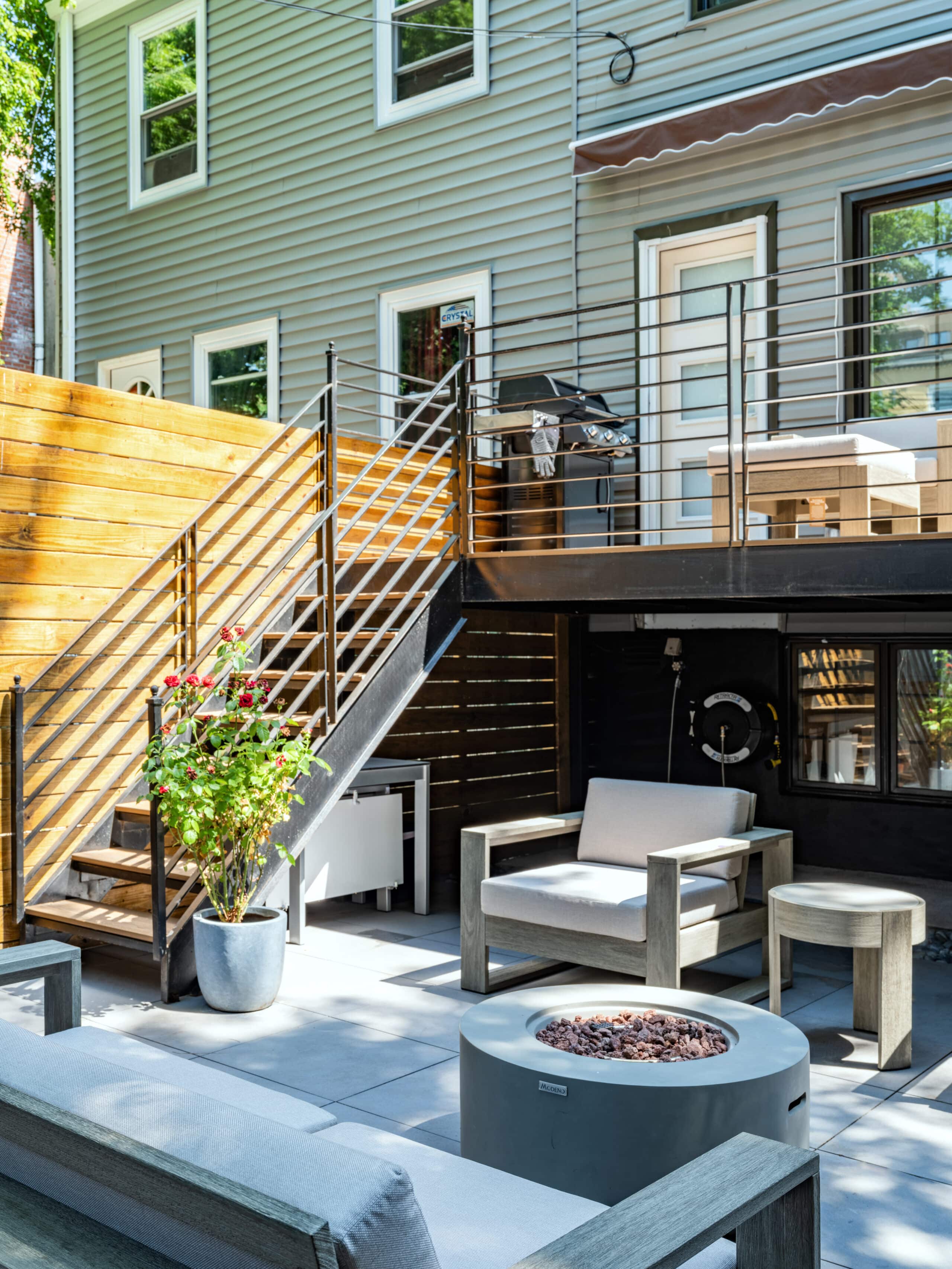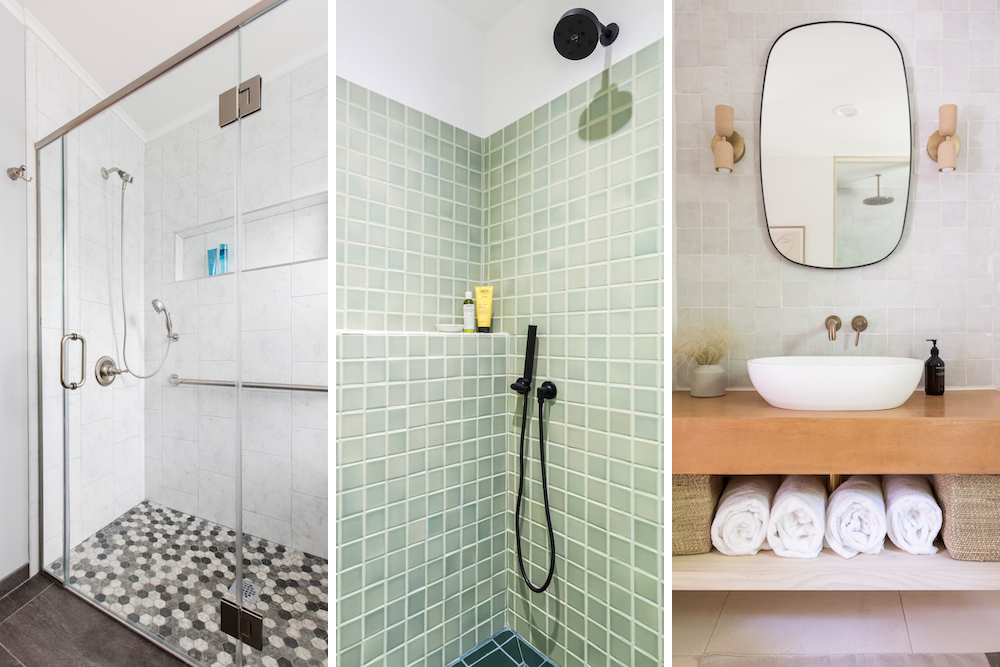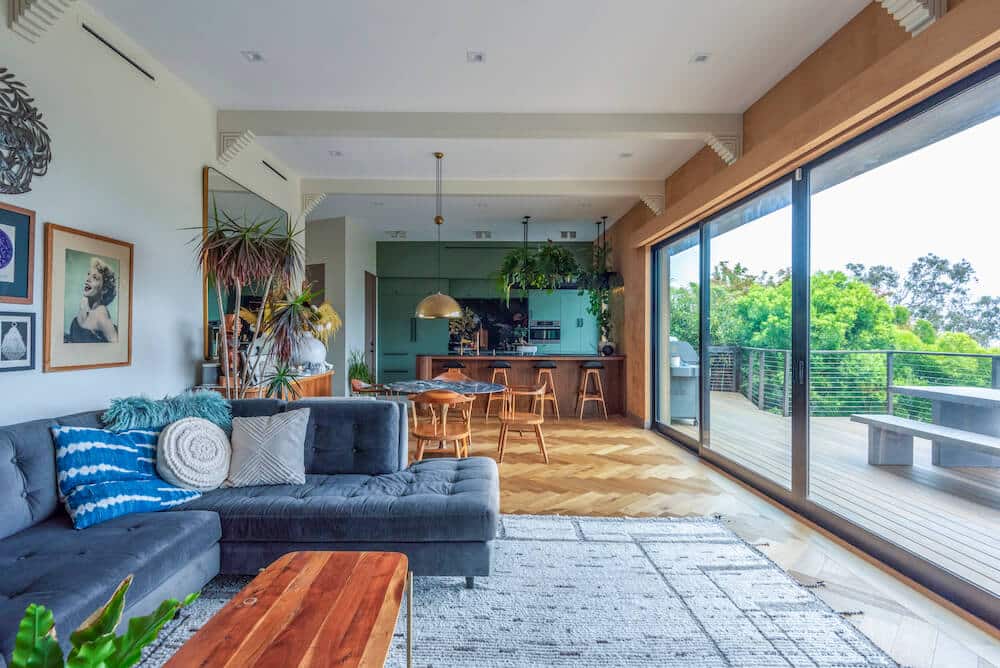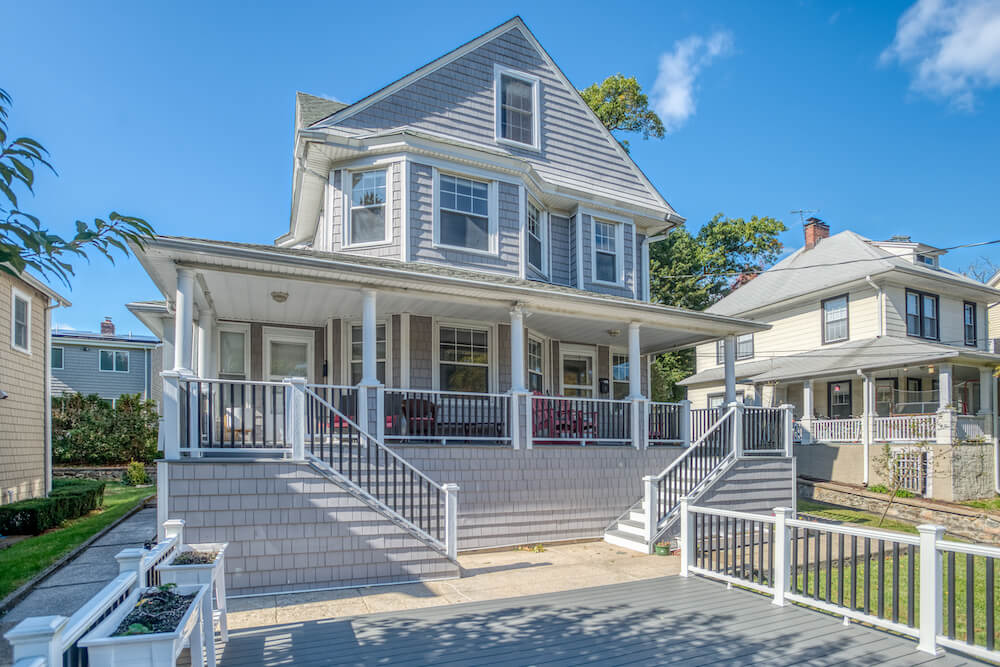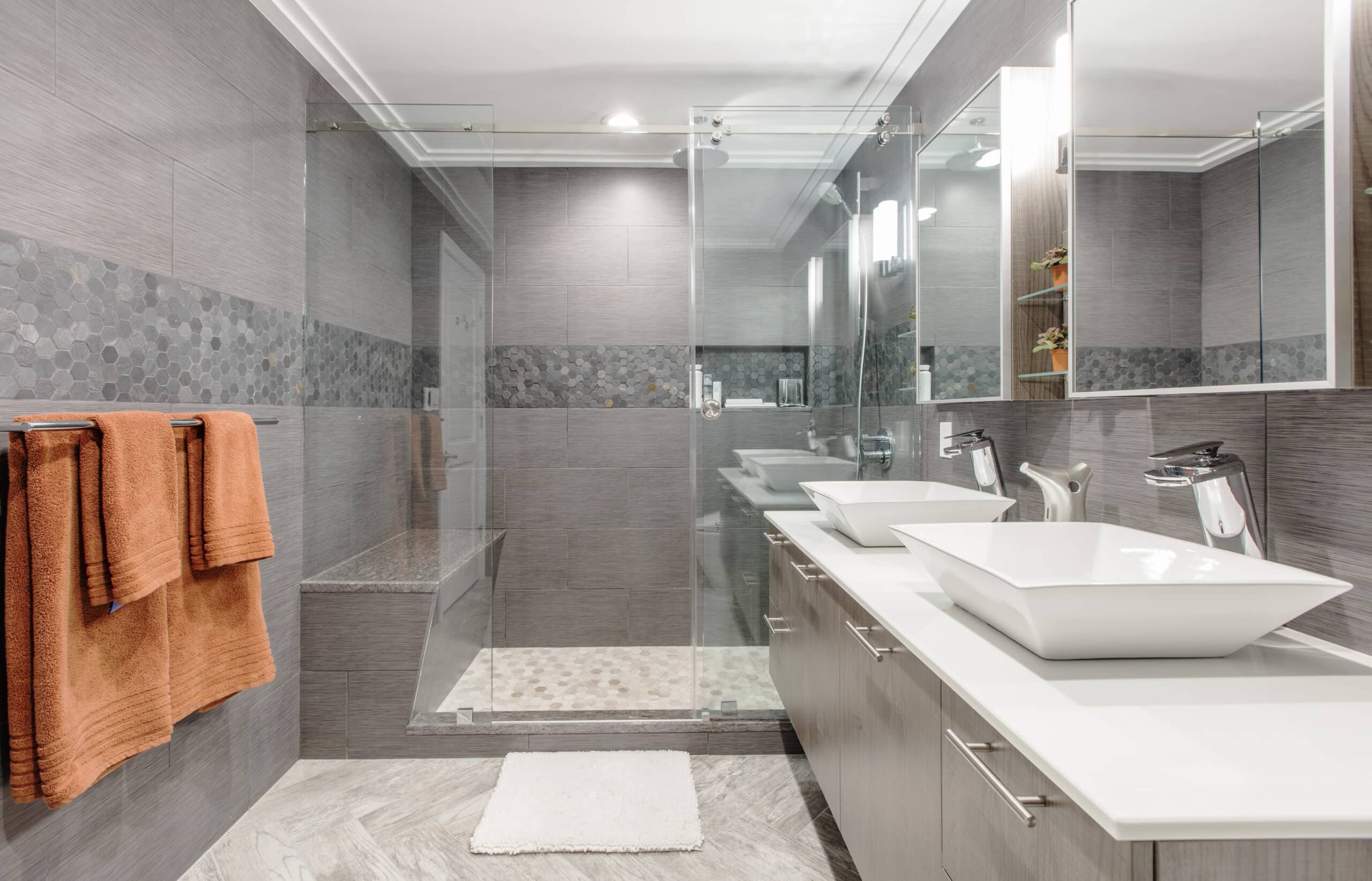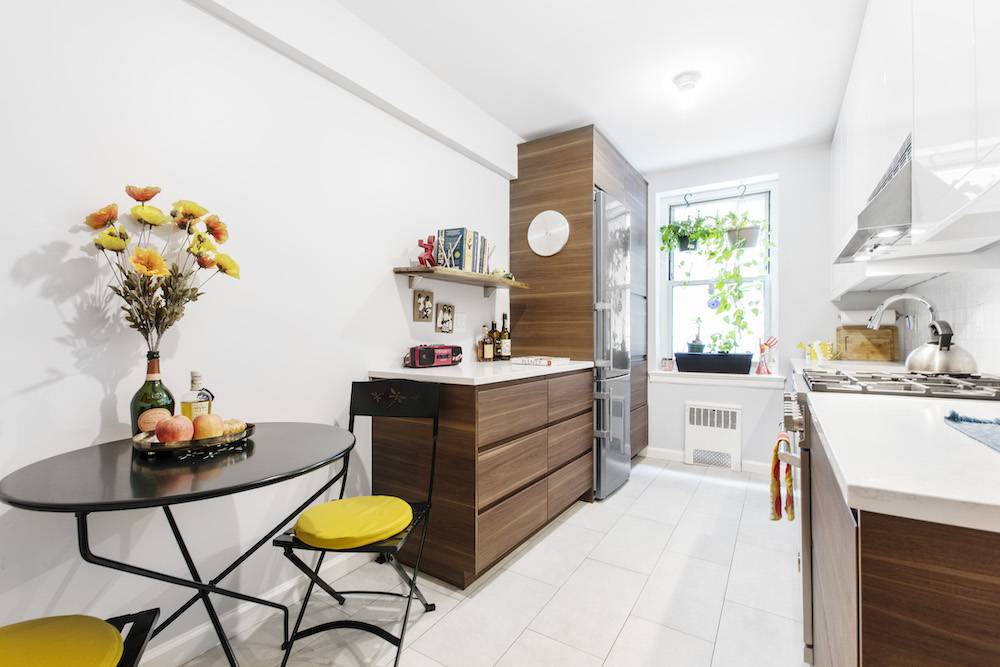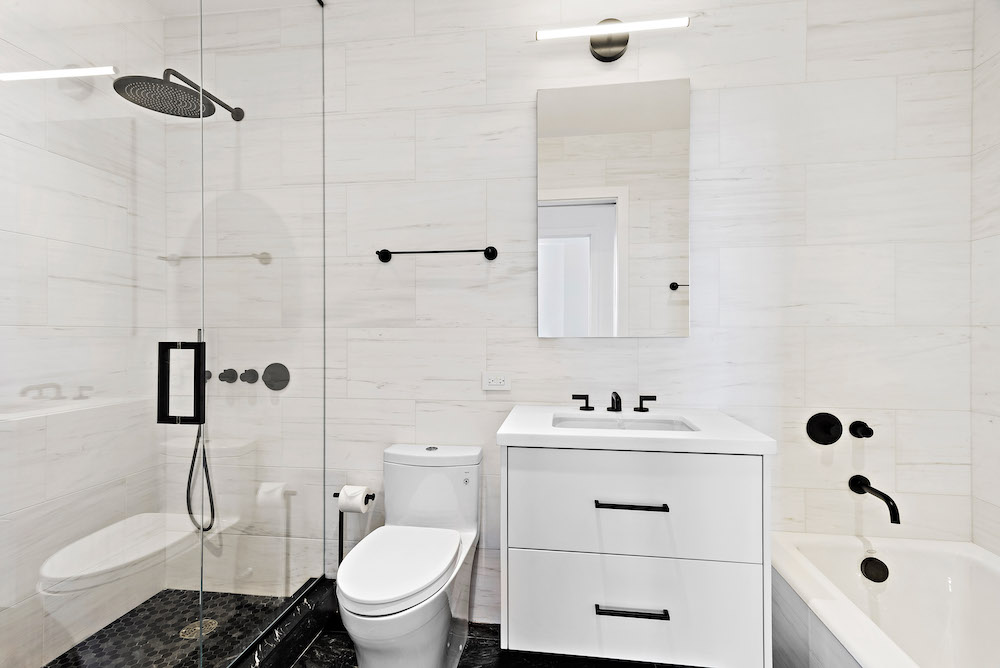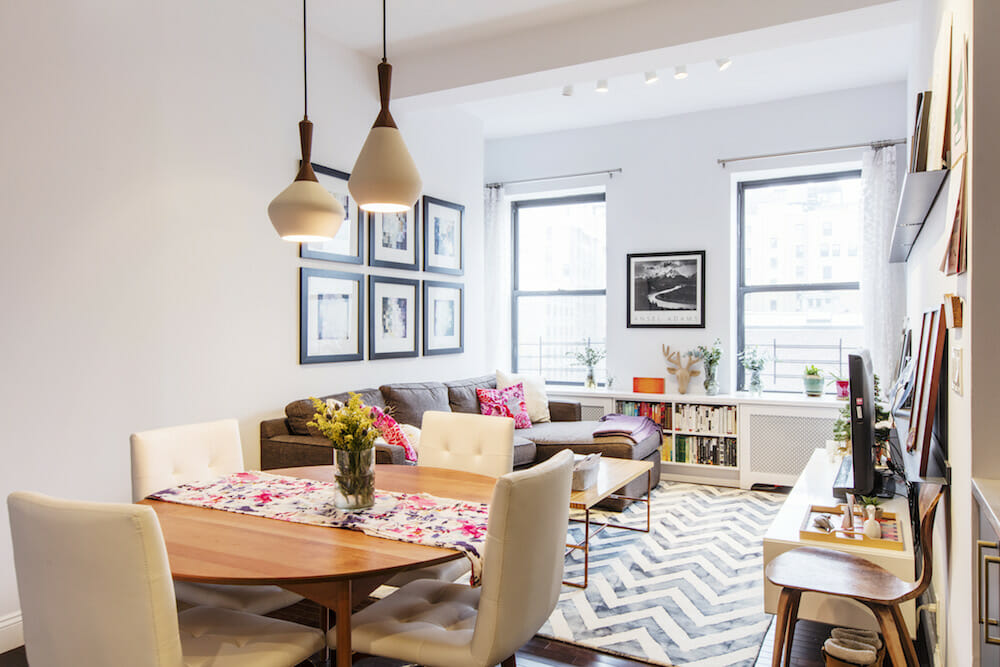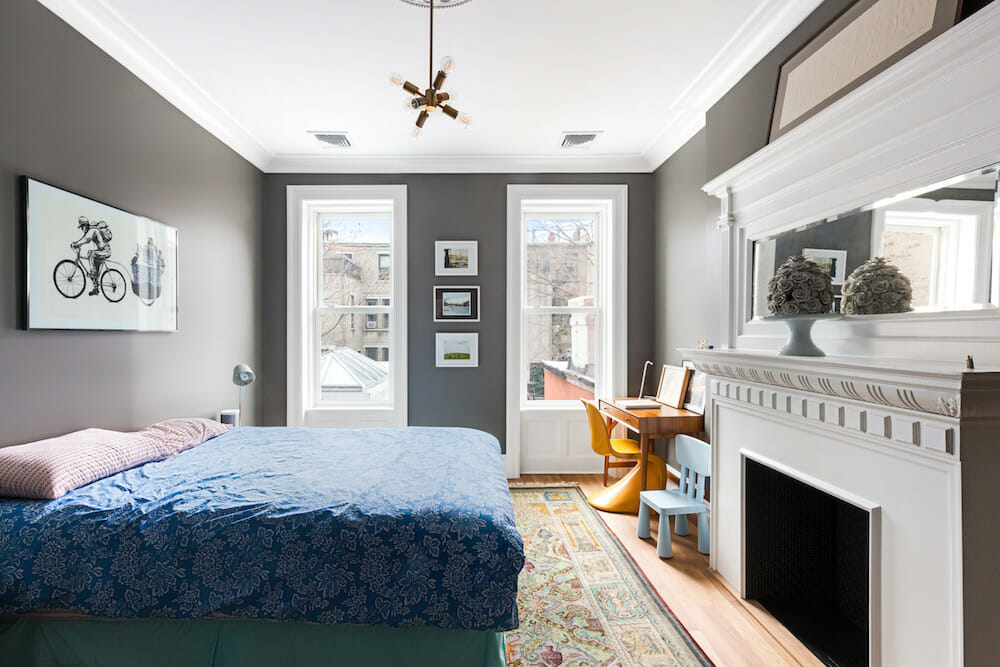Your Guide to Outdoor Deck Construction and Renovation
Year-round gatherings, fresh air, and a seamless connection to nature—these are just some of the benefits a well-designed outdoor deck can bring to your home. More than just an extension of your living space, a deck offers a unique vantage point to enjoy your property and the outdoors, creating a hub for social gatherings or quiet moments of solitude.
Outdoor decks provide space for year-round gatherings and add revalue to a home

Sweeten simplifies home renovation. We connect homeowners with top-rated general contractors, handling the vetting process and project management. To learn more about how we can help, check out our guide to home renovation services.
You don’t need to confine your living space to the inside of your home. Your backyard or side yard can offer a paradise of fresh air, natural light, plants, and flowers. Outdoor decks tie these two living spaces while also adding to the value of your home.
Think of a deck as the perfect connection from inside to outside. An outdoor deck elevates users from the ground and provides a unique view of your property and beyond. Decks also can be a centerpiece of outdoor social life, a gathering place for barbecues, parties, or even restful solitude.
“Decks are a great way to add space to your property,” said New Jersey-based Sweeten general contractor Chris. “By extending your outdoor living seasons, they basically make your home larger.” Sweeten, a free renovation platform that matches homeowners with licensed general contractors and tracks their projects, explains what you need to know about building or renovating an outdoor deck.
Types of outdoor decks
Freestanding outdoor decks
Here’s improved content for the “Freestanding outdoor decks” and “Attached or fixed decks” sections, focusing on clarity, conciseness, and better flow:
Freestanding outdoor decks
Freestanding decks, also known as floating or ground-level decks, sit closer to the ground than attached decks. This type of deck can be built adjacent to your house or anywhere else in your yard. Sweeten brings homeowners an exceptional renovation experience by personally matching trusted general contractors to your project, while offering expert guidance and support—at no cost to you. Renovate expertly with Sweeten
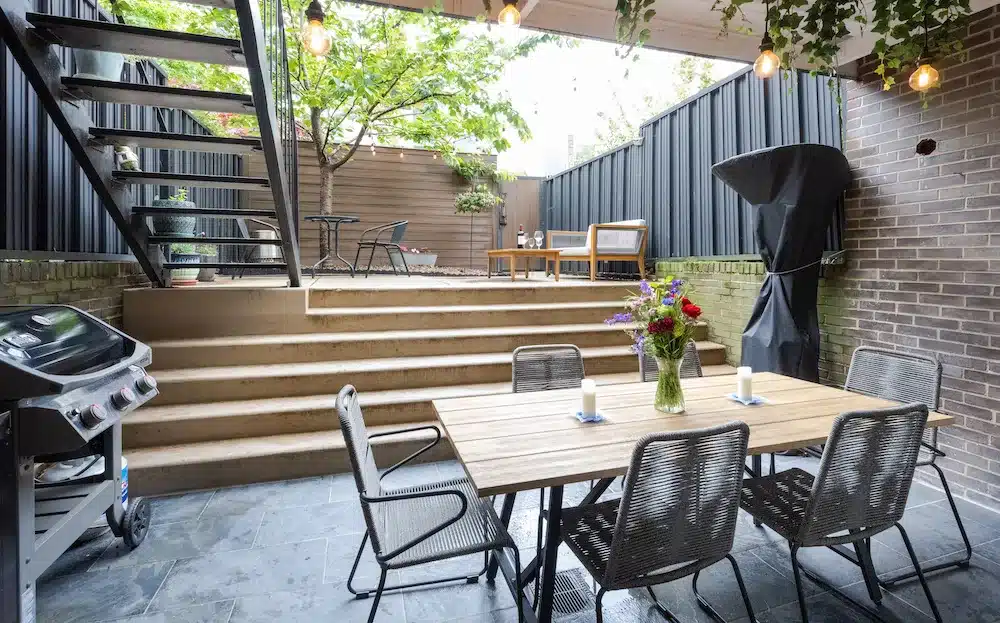
A key advantage of freestanding decks is that they often have less stringent permitting requirements. Many municipalities don’t require building permits for decks below a certain height (typically 30 inches) and those not built over a basement or lower story. However, the deck must still comply with all applicable building codes, and it cannot provide access to a basement or lower story. Always check with your local building department to confirm specific regulations in your area.
Attached or fixed decks
Attached, or fixed, decks are more complex structures than freestanding decks. They are typically elevated, requiring specialized footings, railings, and a ledger board for secure attachment to the house. Due to this complexity, most homeowners choose to hire a professional contractor for attached deck construction.
Attached decks offer a stronger visual connection to the home, seamlessly integrating indoor and outdoor spaces. As Maxx, a designer for a Sweeten general contractor in Chicago, explains, his company strives to “blur the line between inside and outside. We allow the exterior to be an extension of the indoors, and we like to have the indoor flow to the outside so that it doesn’t feel like an appendage. We like to take the whole-house approach.”
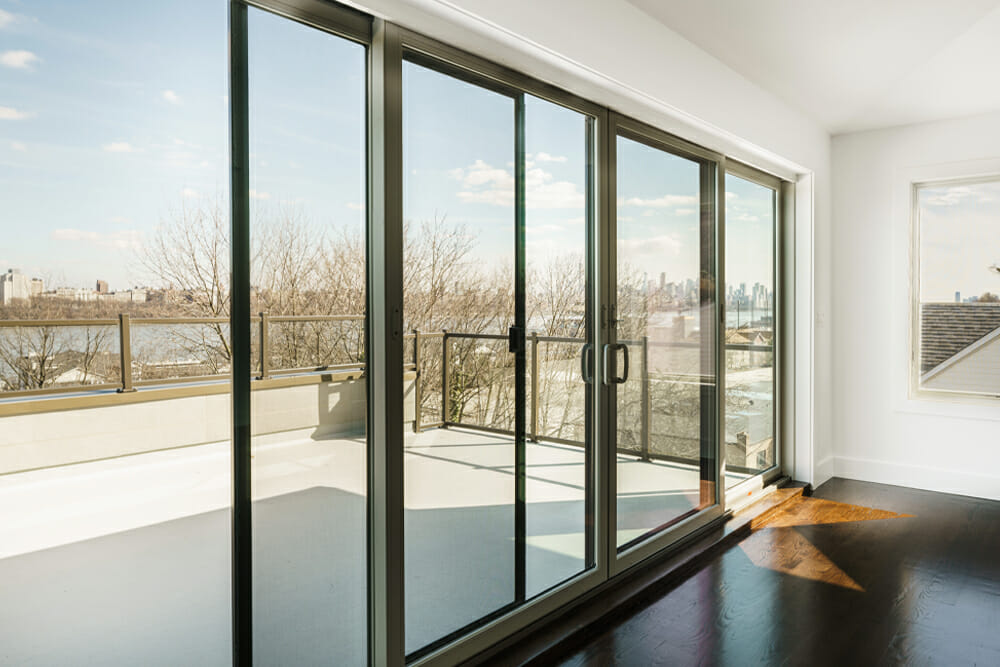
How do you build an outdoor deck?
Building a new outdoor deck will require all of the following steps, while renovating a deck may involve only a subset. Building a new deck usually takes between 1 and 3 weeks.
- The homeowner meets with the deck builder to discuss their vision for the deck. The builder may advise the homeowner on appropriate styles and designs.
- Next, the team draws up detailed blueprints and prices out materials to create a solid cost estimate for the homeowner.
- The builder submits deck plans to the building department. City technicians visit to mark the site so digging doesn’t damage underground services.
- They prepare the site by staking out string around the outline of the deck, and removing any necessary sod.
- After establishing the position of the piers and footers, the builders create the the deck: dig the holes; set the piers and footers; install the ledger board on the house; install the posts, followed by beams and joists.
- After they establish the general structure, they attach and trim the decking boards.
- They add additional features, such as stairs and railings.
- If needed, they stain the deck, and seal it for weather resistance.
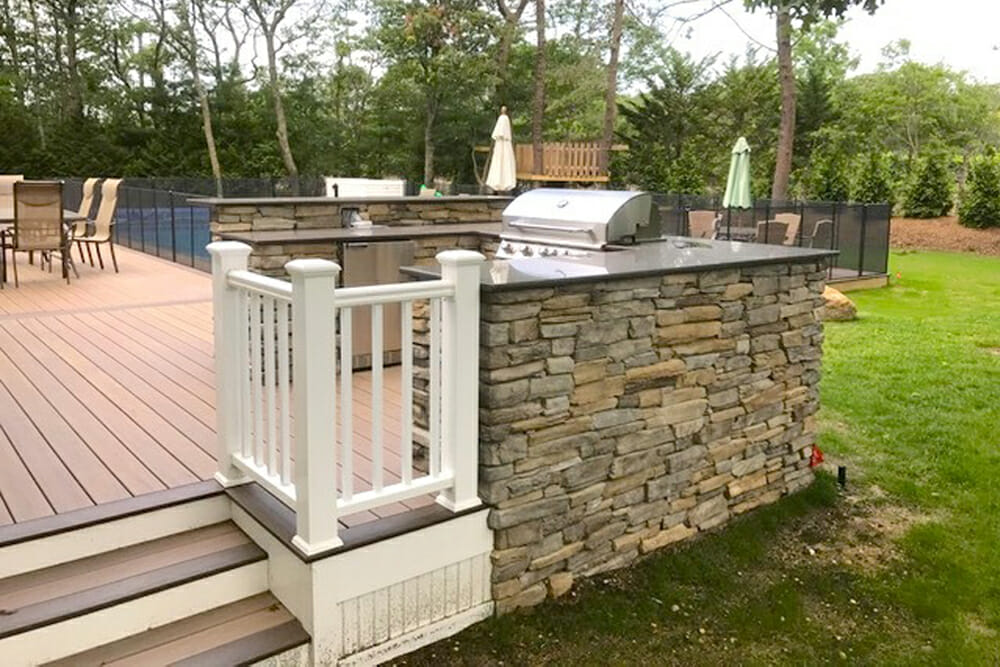
What materials are used in outdoor decking?
Pressure-treated lumber is the most common material for the lower structural part of the deck. Although code requirements may determine lower decking materials, there are several options available for the top deck. One way to renovate a deck is to remove old deck materials from an existing deck and replace them. This method reduces costs since the entire outdoor decking structure does not need to be rebuilt.
- Composites: Most composite material is made of recycled plastics and wood fibers. Wood composite is a popular material due to its softness underfoot and durability. Wood composite decks don’t ever need staining or sealing. However, colors can fade over time, especially in sunnier areas. While composites are low-maintenance, they are not maintenance-free. Like other outdoor decking materials, you must periodically clean composite wood of moss, mold, and mildew, especially if the deck is in shade.
- Fiberglass: “Fiberglass deck material is very popular now,” said Chris. “It can be painted or stained and it lasts forever.” Slip-resistant fiberglass panels overlap to form a continuous solid surface, which is beneficial when decking over a lower area needs to stay dry. Fiberglass deck panels do not rot, rust, or harbor mildew; which makes this material ideal for high-moisture conditions.
- Tropical hardwoods: Ipe and tigerwood are two common species of tropical hardwoods used for decking materials. These dense woods are difficult to cut and drill, but their density means that the deck’s longevity will beat that of pressure-treated wood, redwood, and cedar. Because of their natural fire resistance, building codes may allow some tropical hardwoods in situations where other woods aren’t an option. Tropical hardwoods are expensive—but they may help both the deck and the home maintain value over the years, even into resale.
- Redwood and cedar: Redwood and cedar are softwoods mainly sourced from western states. These materials are a good compromise between expensive tropical hardwoods and pressure-treated wood. These kinds of wood are imbued with natural tannins and oils, and do not require chemical preservatives.
- Pressure-treated wood: The most economical choice is pressure-treated wood. Southern yellow pine, which is pressure-injected with chemicals that help the wood resist rot and wood-boring insects, is popular. One disadvantage to pressure-treated wood decking is that the wood splinters easily and isn’t safe for walking on with bare feet. Be sure to always coat pressure-treated deck materials on top to extend their durability. Because of these issues, Sweeten contractor Chris says that pressure-treated wood has become less popular for upper deck materials, though it is always used for the lower structure.
What is the best time to build an outdoor deck?
Inclement weather will complicate any building project. Tarping the deck during rain or snow may improve conditions during construction, but it’s usually easier for crews to work without a cover. Frozen ground can slow digging. Late spring to mid-fall is the most comfortable and efficient time to build or renovate. Nevertheless, most deck builders work year-round. The trick to working through all seasons, said Chris, is to dig the holes for the footers in advance—before the ground freezes.
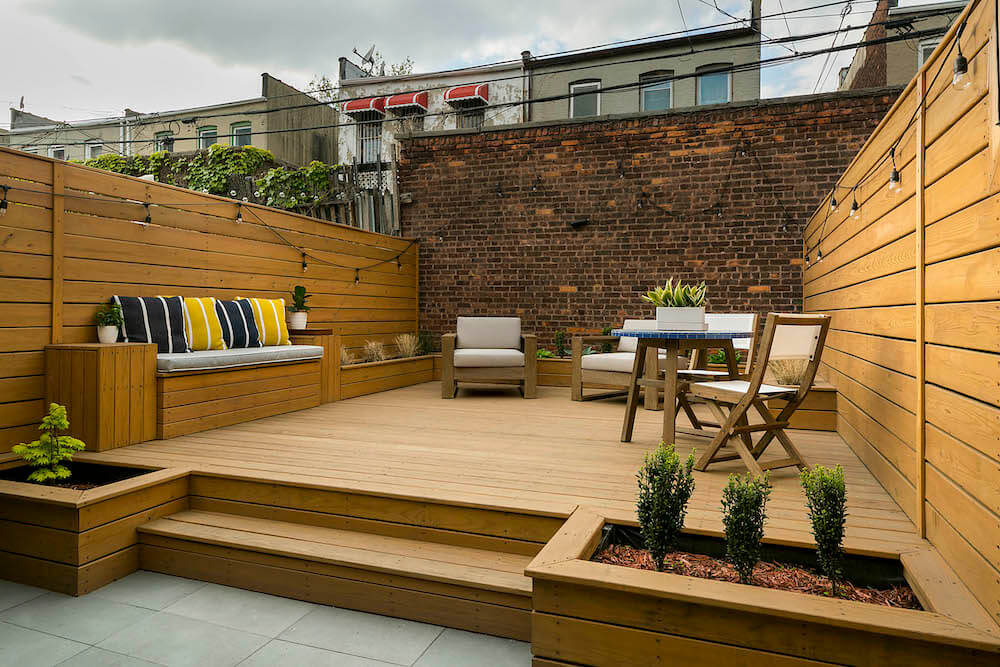
How much does it cost to build an outdoor deck?
The average national cost for a deck addition is $14,360, according to Remodeling’s Cost vs Value report. A composite deck returns 66.8% of its cost in added home value, while a wood deck returns 72.1%. Premium decks with full-service features, similar to all-purpose outdoor entertainment areas, can range up to 2,000 square feet in suburban areas. Deck sizes in downtown areas tend to be smaller (between 70 to 120 square feet), but the decks are often higher and with multiple levels. Costs can range from $40,000 to $60,000, increasing with extra features. For example, when a deck extends and includes larger amenities, like a swimming pool, costs can exceed $100,000.
According to Facini, deck-building costs are highly variable. They depend on factors like decking materials, condition of the site, grade, number of decks and their height, plus special items like glass railings. Generally, you can expect decking material to cost around $20 to $30 per square foot for composites or tropical hardwoods like teak. Overall, total costs generally range from $25,000 to $30,000.
Beginning to build your ideal outdoor deck
Decks bring joy to so many homeowners by expanding their living and entertaining area, and by offering such practical access to the outdoors. Sweeten’s expert general contractors have helped homeowners envision, plan, and build outdoor decks. Post your project for free to get matched with a Sweeten expert decking contractor today.
Ready to renovate? Start the journey here for free!
Here you can learn more about our services and locations. Alternatively, browse more home renovation inspirations, processes, and cost guides.
